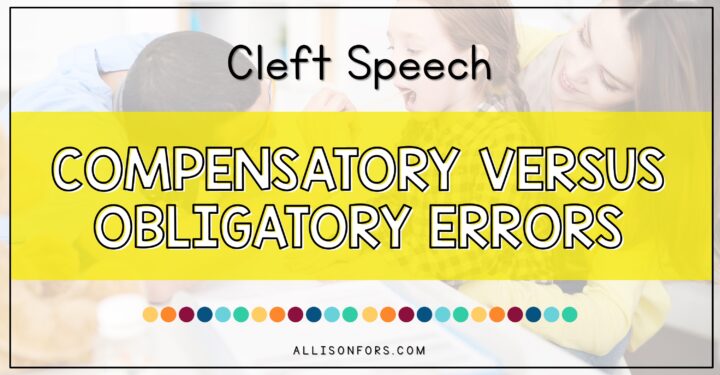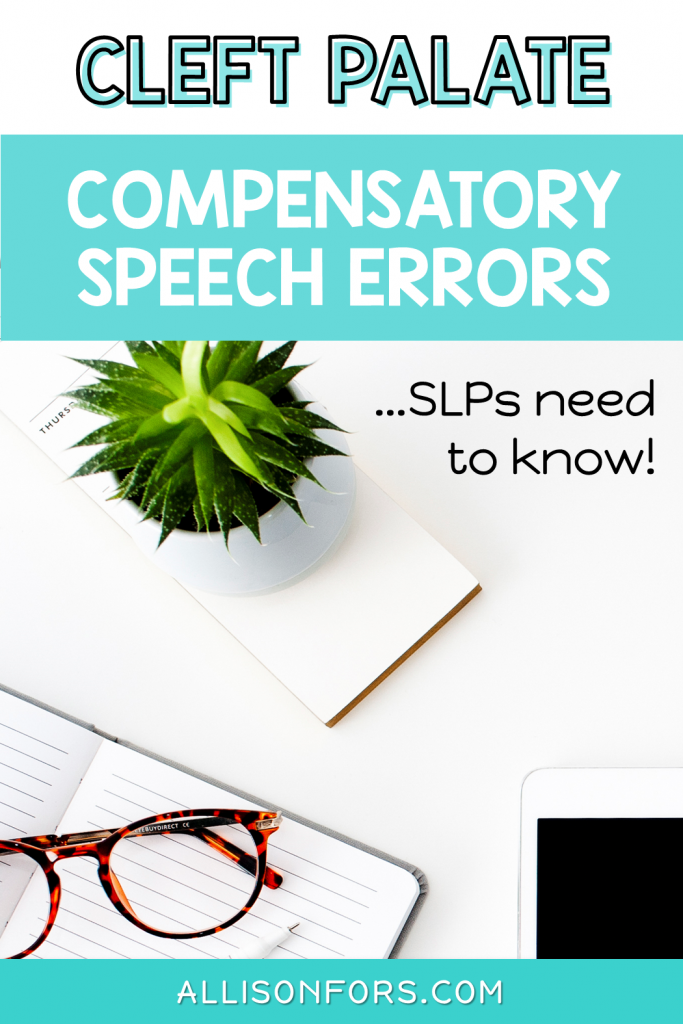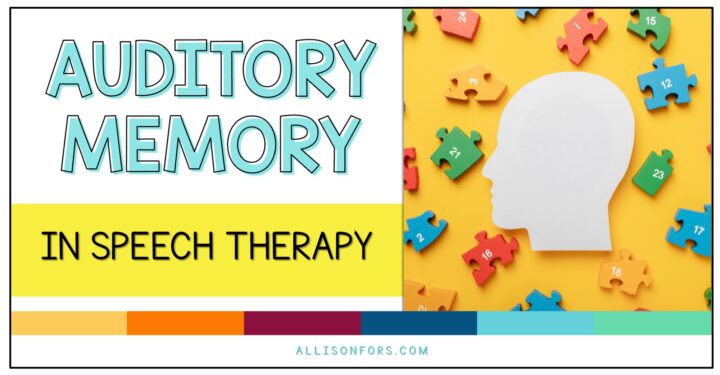
Common Cleft Palate Speech Compensatory Errors

Have a new kid on your caseload with a history of cleft palate and want to learn more about “cleft palate speech” errors? You’re in the right place!
Children with a cleft palate may learn to use abnormal speech sounds due to abnormal anatomical structures. These speech sounds are called compensatory errors and oftentimes persist after surgery due to learned behavior and require speech therapy to remediate. As SLPs and SLPAs, it is important to recognize and identify specific compensatory errors when working with this population. Approximately 25% of children with cleft palates use compensatory articulation errors and glottal stops are the predominant error!
Compensatory error: Abnormal articulation placement due to abnormal structure. These are most often errors of placement, not voice or manner. These errors may persist after palate repair and require speech therapy.
Five common compensatory articulation errors:

1. Glottal stops – A sound produced by bringing the vocal cords together and then releasing them suddenly instead of the tongue or lips. You may hear or use a glottal stop while producing certain words, such as “button”, instead of fully articulating the “t” in the middle of the word or in “uh oh.” A glottal stop is typically used for /p, b, t, d, k, g/ sounds. For example, a child with a cleft palate may say the word puppy as “uh-ih”.
2. Nasal fricatives – When air is directed into the nasal cavity while producing a fricative sound such as /f, s, v, z/, “th”, and “sh”.
3. Pharyngeal fricatives – When the wall of the throat is used to produce a fricative sound instead of with the tongue. This is typically used to substitute the /s, z/ and “sh” sounds.
4. Pharyngeal stops – When the back of the tongue contacts the wall of the throat to stop airflow. This is typically used to substitute the /k, g/ sounds but may be used for other oral stops or oral pressure consonants.
5. Mid-dorsum palatal stops – When airflow is stopped by the tongue contacting the middle of the roof of the mouth and used as a substitute for /t, d, k, g/. This error sounds like a production between a “k” and “t”.
Important notes:
Oral-motor exercises, such as blowing and sucking, are never indicated to improve velopharyngeal function.
Speech therapy does not fix velopharyngeal dysfunction (where the post does not close properly.) The child may demonstrate nasal air emission or hypernasality due to VPD and must be referred to ENT.

Where can I learn more about treating cleft palate?
Find a compilation of information, websites, research, and more: https://allisonfors.com/cleft-lip-and-palate/
Further reading: Treating Cleft Palate: Q&A with a Craniofacial SLP







2 Responses
Thank you. Do you have information on common errors with repaired cleft palate?
Hi, These are the common errors that can persist after repair due to learned behavior. There can also be articulation errors due to anatomical differences. You may also hear errors due to resonance and voice disorders (hypernasality, hyponasality.) I have more information and links to other websites/resources here: https://allisonfors.com/cleft-lip-and-palate/